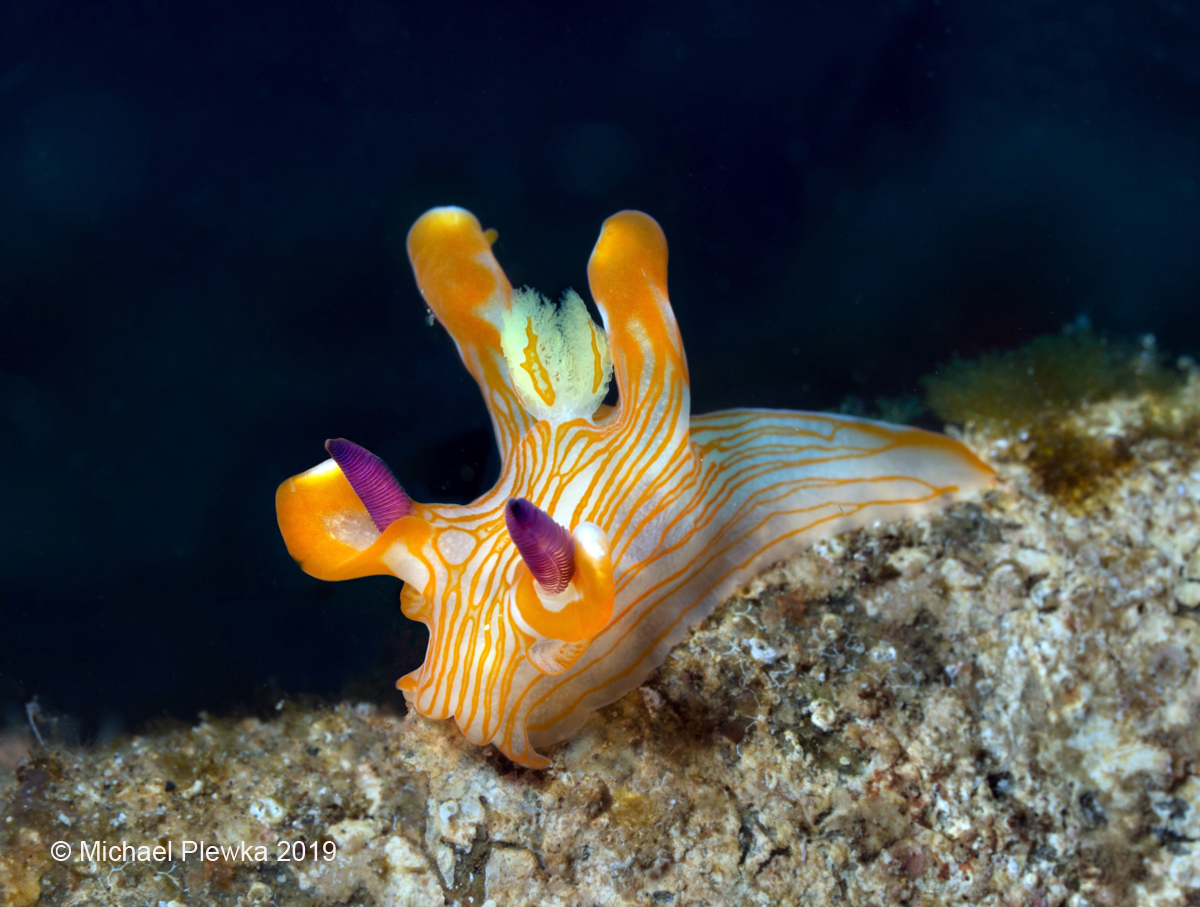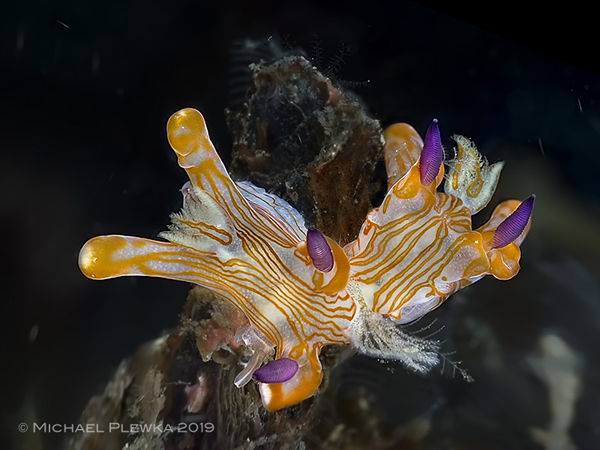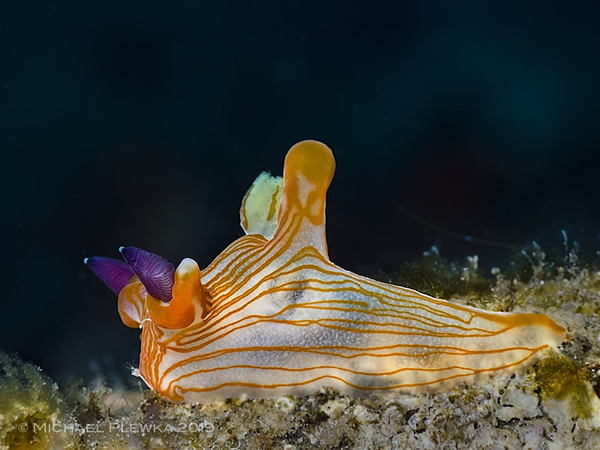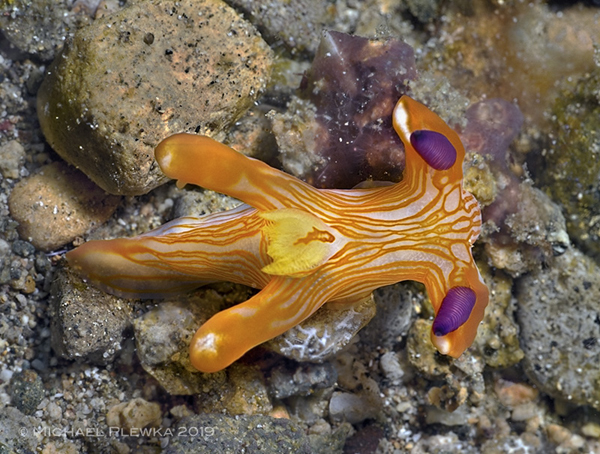 |
Image courtesy of Michael Plewka
Red Rock Dive Site, Anilao, Philippines
Photo by Michael Plewka
 |
|
Photo by Michael Plewka
 | WEBMASTER'S NOTES: Michael's diveguide for this trip was Peri Paleracio working out of Club Ocellaris. Peri found this guy in 90 feet of water in the Red Rock area. The depth seems to tipify the presumed deep dwelling nature of this Thecacera . In all my years of diving in the Anilao area I personally have never seen it. Although it has been run twice before (1)and (2). How could Dave and I not run it again given the spectactular images Michael sent us! Although low on air at the time Peri found the pair, Michael nevertheless went for the opportunity and the result is before you! I also wish to thank Dr. Elias Amador who connected Michael to Dave and I while both were diving at Club Ocellaris! |
Photo by Michael Plewka
 |
"...For my camera I have a cheap, custom-built 90 degree viewfinder that enables me to shoot fotos from an angle parallel to the surface the critters are living on which gives a nice perspective. Images were taken with an Olympus E-Pl5 with two strobes (Sea and Sea YS- D2 and an Inon Z 240) at 1/250 f11..." Michael's Diving Bio: "...After studying marine biology with emphasis on coral biology, which included diving for taking samples of corals in Bermuda and Hawaii I stared working as a teacher for biology and chemistry at a high school in Germany. So only when there are holidays there is a chance to visit tropical coral reefs especially in the indopacific region. While, when working at school, the focus is on limnic organisms like rotifers, the main interest in tropical waters is on the beauty of lifeforms of marine invertebrates. When I started visiting the Anilao region in the Philippines 5 years ago, the two renown filipino diviguides Alexis Principe and Peri Palacerio introduced me into the world of nudibranchs, which are since then one of the most interesting " targets" for me as a photographer..." More images can be seen at Michael's website |
Dave Behrens
Sammamish, WA 98074
Jun., 2019
Send Dave Behrens email at davidwbehrens@gmail.com
Send Michael email at plingfactory@plingfactory.de

Attention all you Sluggers, and you know who you are! The NSSI 2nd edition is now available in ebook PDF and book form . The hard back version will become available Nov. 1st. Both will cost $65 (individually). You will need to jump through a few hoops to get the electronic version as pdf distribution is protected by Adobe ID!! Please read the following to enable reading your electronic purchase! This new 2nd Edition is updated and reorganized, including 185 new species. Among other features, the new edition includes additional photographs of species, an identification key, and an up-to-date classification reflecting the latest evolutionary relationships. The Indo-Pacific represents the largest expanse of tropical ocean in the world, stretching from the Indian Ocean coast of southern Africa and the Red Sea to the central Pacific of the Hawaiian Islands, Easter Island and the Marquesas. This region supports the most diverse marine fauna of any place in the world for most groups of marine organisms. The nudibranchs and sea slugs are no exception to this rule; there are about 3,000 described species of these organisms in the world and at least 40% of these have been found exclusively in the Indo-Pacific tropics. This book illustrates 2,138 Indo-Pacific nudibranchs and sea slugs, including many undescribed species.
|

|
